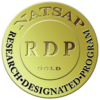As an adult family member, you’ve tried to teach your adolescent about the dangers of underage drinking. But despite the many long conversations at home and how responsible your teen seems, you may be surprised just how common alcohol use is among people his age. In fact, these underage drinking statistics may alarm you. They show just how difficult it may be for him to avoid people and places that promote underage drinking. But the good news is that a teen intervention in North Carolina can help him get back on the right path. Here’s what you need to know.
National Underage Drinking Statistics
To gain a sneak peek into the mind of the teen and underage drinking statistics, we look at the annual SAMHSA survey. It shows some interesting findings of both teen drinking stats and their perception of alcohol.
Did you know that 33% of teens don’t consider drinking five alcoholic drinks every day dangerous? But young boys are around 20% more likely than girls to believe that drinking this much could cause physical or mental harm.
So it’s no surprise to find underage drinking statistics like these:
- Nine percent of adolescents (12-17) say they took their first drink within the past year
- Nearly six percent of teens (12-17) from families above the poverty line report binge drinking in the past 30 days
- Around 11% of older minors (16-17) have engaged in binge drinking in the last month while only around one percent of 12- and 13-year-olds claim the same
- Nearly four percent of teens below the poverty line binge drink
- Around 15% of adolescents who use in their teens will develop a substance abuse disorder by 25
This accentuates why drinking alcohol in adolescence is not innocent and they’re not likely to “grow out of it”. Early intervention is key to preventing a child from going down that dark path.
What Alcohol Does to the Adolescent Brain
Understanding underage drinking statistics is only the first step. As a parent, you need to know the risks. Regardless of age, alcohol consumption alters the natural function of the brain. However, in the case of teens using alcohol, those effects are amplified even when drinking in much smaller quantities. Decades of research show the effects of these kinds of teen drinking statistics. Alcohol can cause damage to the brain in many ways, such as:
- Poor memory recall, which may also impact school performance
- Trouble forming new memories and learning new things
- Disruption to the hippocampus, which helps regulate everything from emotions to sleep to hormone balance
- Difficulties with motor function, which extends beyond the period of intoxication in the adolescent brain
- Increased risk of seizures and other severe withdrawal symptoms
Alcohol not only impairs the brain for teenagers now. Scientists believe that it also impacts vital life skill learning that happens in teens. The adolescent years are filled with self-exploration, expanding horizons, learning to think independently, and figuring out how to deal with that first big heartache. When alcohol or other drugs are present during these important life events, it can stunt personal growth. In other words, an adolescent who doesn’t learn these things during their teenage years will have much greater trouble learning them as an adult.
How to Help Your Adolescent
Foothills at Red Oak Recovery specializes in helping 14-17-year-old males who are struggling with alcohol by redefining the clinical experience. We offer an extensive range of services to help your adolescent reclaim his life. Some of these programs include:
- Family therapy
- Equine therapy
- Academic programs that ensures your child doesn’t fall behind while in recovery
- Psychological testing to identify thought and behavioral patterns
When it comes to adolescents, no amount of recreational alcohol use is okay. As a concerned family member, you can help your teen overcome the pressure to drink and get back on the path of learning and growing. Call us at 866.300.5275 to learn more.





